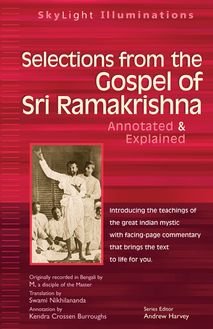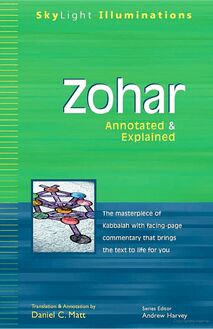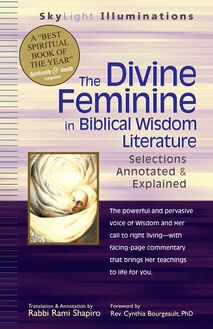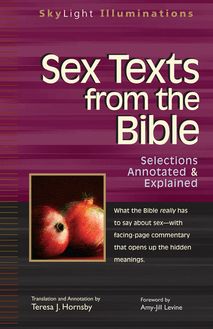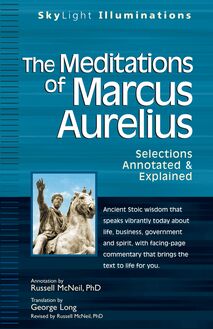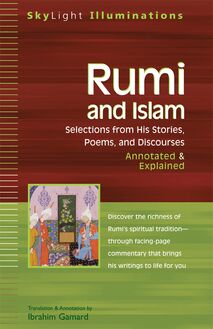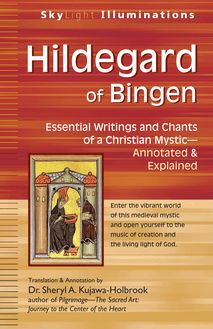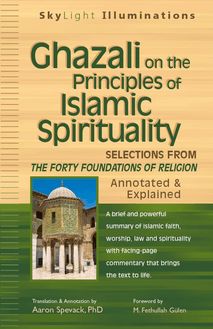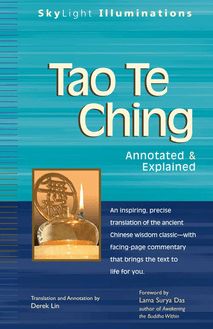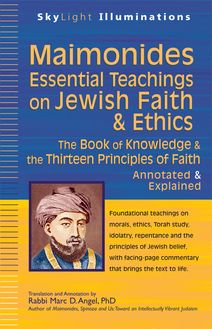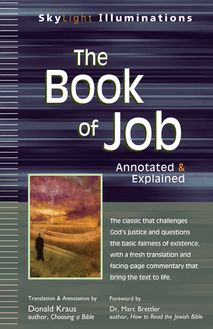The Lost Sayings of Jesus , livre ebook
105
pages
English
Ebooks
2011
Vous pourrez modifier la taille du texte de cet ouvrage
Obtenez un accès à la bibliothèque pour le consulter en ligne En savoir plus
Découvre YouScribe en t'inscrivant gratuitement
Découvre YouScribe en t'inscrivant gratuitement
105
pages
English
Ebooks
2011
Vous pourrez modifier la taille du texte de cet ouvrage
Obtenez un accès à la bibliothèque pour le consulter en ligne En savoir plus
Publié par
Date de parution
30 juin 2011
Nombre de lectures
1
EAN13
9781594733604
Langue
English
Jesus’s words of wisdom can become a
companion on your own spiritual journey.
The gospels of Matthew, Mark, Luke and John are not the only record we have of the words spoken by Jesus. Designed to challenge, enlighten and inspire, they are also quoted in a wide variety of other ancient sources—including the Qur’an, writings by early Christian church fathers, and fragments of lost gospels only recently discovered. Some of these sayings are familiar; many are surprising; all expand our conventional understanding of the scope and essence of Jesus’s original teachings.
More than a “Christian” compilation, this collection of more than three hundred sayings reveals a Jesus whose words encapsulate spiritual truths that resonate across religious boundaries. From the encouraging “I am hope for the hopeless,” to the wise and practical “Love those who hate you and you will not have an enemy,” to the candid “Give no opportunity to the evil one,” these pointed sayings not only reveal how Jesus was understood and portrayed across a wide variety of cultures long ago—they will also penetrate to your heart, challenge your assumptions, and energize your own spiritual quest. Now you can experience the wisdom and power of Jesus’s sayings even if you have no previous knowledge of these little-known texts.
Publié par
Date de parution
30 juin 2011
Nombre de lectures
1
EAN13
9781594733604
Langue
English
Selected Books in the SkyLight Illuminations Series
The Art of War-Spirituality for Conflict: Annotated & Explained
Bhagavad Gita: Annotated & Explained
The Book of Mormon: Selections Annotated & Explained
Celtic Christian Spirituality: Essential Writings-Annotated & Explained
Chuang-tzu: The Tao of Perfect Happiness-Selections Annotated & Explained
Confucius, the Analects: The Path of the Sage-Selections Annotated & Explained
Dhammapada: Annotated & Explained
The Divine Feminine in Biblical Wisdom Literature: Selections Annotated & Explained
Ecclesiastes: Annotated & Explained
The Gospel of Philip: Annotated & Explained
The Gospel of Thomas: Annotated & Explained
Hasidic Tales: Annotated & Explained
The Hebrew Prophets: Selections Annotated & Explained
John and Charles Wesley: Selections from Their Writings and Hymns-Annotated & Explained
The Meditations of Marcus Aurelius: Selections Annotated & Explained
Native American Stories of the Sacred: Annotated & Explained
Philokalia: The Eastern Christian Spiritual Texts-Annotated & Explained
Proverbs: Annotated & Explained
The Qur an and Sayings of Prophet Muhammad: Selections Annotated & Explained
Rumi and Islam: Selections from His Stories, Poems, and Discourses-Annotated & Explained
The Sacred Writings of Paul: Selections Annotated & Explained
Saint Augustine of Hippo: Selections from Confessions and Other Essential Writings-Annotated & Explained
St. Ignatius Loyola-The Spiritual Writings: Selections Annotated & Explained
The Secret Book of John: The Gnostic Gospel-Annotated & Explained
Tanya , the Masterpiece of Hasidic Wisdom: Selections Annotated & Explained
Tao Te Ching: Annotated & Explained
The Way of a Pilgrim: The Jesus Prayer Journey-Annotated & Explained
Zohar: Annotated & Explained
The Lost Sayings of Jesus: Teachings from Ancient Christian, Jewish, Gnostic, and Islamic Sources-Annotated & Explained
2006 First Printing Translation, annotation, and introductory material 2006 by Andrew Phillip Smith
All rights reserved. No part of this book may be reproduced or transmitted in any form or by any means, electronic or mechanical, including photocopying, recording, or by any information storage and retrieval system, without permission in writing from the publisher.
For information regarding permission to reprint material from this book, please mail or fax your request in writing to SkyLight Paths Publishing, Permissions Department, at the address / fax number listed below, or e-mail your request to permissions@skylightpaths.com.
Library of Congress Cataloging-in-Publication Data
The lost sayings of Jesus : teachings from ancient Christian, Jewish, Gnostic, and Islamic sources, annotated & explained / translation and annotation by Andrew Phillip Smith ; foreword by Stephan A. Hoeller. p. cm. - (SkyLight illuminations) Includes bibliographical references (p. ). ISBN-13: 978-1-59473-172-3 ISBN-10: 1-59473-172-1 1. Jesus Christ-Words. I. Smith, Andrew Phillip, 1966- II. Series. BT306.L67 2006 229'.92-dc22 2005036647
10 9 8 7 6 5 4 3 2 1
Manufactured in the United States of America Cover design: Walter C. Bumford III Cover art: Jesus by Chris Sofopoulos 2005 by Chris Sofopoulos (www.pbase.com/sofo)
SkyLight Paths Publishing is creating a place where people of different spiritual traditions come together for challenge and inspiration, a place where we can help each other understand the mystery that lies at the heart of our existence.
SkyLight Paths sees both believers and seekers as a community that increasingly transcends traditional boundaries of religion and denomination-people wanting to learn from each other, walking together, finding the way .
SkyLight Paths, Walking Together, Finding the Way and colophon are trademarks of LongHill Partners, Inc., registered in the U.S. Patent and Trademark Office.
Walking Together, Finding the Way Published by SkyLight Paths Publishing A Division of LongHill Partners, Inc. Sunset Farm Offices, Route 4, P.O. Box 237 Woodstock, VT 05091 Tel: (802) 457-4000 Fax: (802) 457-4004 www.skylightpaths.com
For my wife and son
Contents
Foreword by Stephan A. Hoeller
Introduction
A Note on the Translation
Christian Sayings
Jewish Sayings
Gnostic Sayings
Islamic Sayings
Further Traditions, Fictions, and Forgeries
Notes
Suggestions for Further Reading
About SkyLight Paths
Copyright
Foreword
Stephan A. Hoeller
The figure of the founder of the Christian religion has always presented a challenge to believers and nonbelievers alike. Referring to the earliest period of the history of Christendom, we find in the Gospel of Matthew (16.13) an account of Jesus questioning his disciples concerning their view of him. Their answers are largely reflective of the diverse opinions circulating at the time among the populace of Judea: Some say that thou art John the Baptist, some Elias, and others Jeremias, or one of the prophets. It would seem that conditions bearing on this subject have not changed all that much since the times described by Matthew. There are a bewildering number of characterizations of Jesus today, most of which contradict each other markedly.
Those of us of an appropriate age may remember Jesus Christ Superstar, an entertaining and provocative play of the 1960s, where Jesus appears as a somewhat abrasive critic of society. A similar note was struck a few years later by the so-called liberation theologians, who saw Jesus as a revolutionary, pure and simple-a kind of first-century Che Guevara. Scholarly popularizers like Hugh J. Schonfield and John M. Allegro represented Jesus as either a scheming politician or a psychedelic-phallic messiah of dubious intentions. The list goes on and culminates in the excitement caused by several popular books published toward the end of the twentieth century (and in the early years of the twenty-first) which represent fantasies about Jesus married to Mary Magdalene as historical fact. Along radically different lines, we may note the revival of nineteenth-century intellectual excesses proclaiming that Jesus was a purely mythological figure compounded from diverse mythologems of previous times. Jesus the revolutionary; the paterfamilias; the schemer; the mythic fiction-so many Jesuses and so much confusion!
The confusion surrounding the figure of Jesus stands a good chance of being reduced when the logia (sayings) attributed to Jesus are brought into public view. In addition to its many other merits, this potential of clarification is one of the great benefits bestowed on us by the comprehensive collection of sayings of Jesus, presented to us here by Andrew Phillip Smith. By availing yourself of this collection of sayings, you may arrive at certain, well-founded deductions regarding the teachings-as well as to some extent the character and mission-of Jesus. Certainly these sayings do not reveal a wild-eyed revolutionary, a conniving schemer, or even the likely progenitor of a secret royal bloodline. But so many sayings-many of which unquestionably reveal a common source- do indicate a historical personage of quite distinct character and orientation who stands behind this plethora of utterances. Those who want to receive authentic glimpses of Jesus may do so by consulting the sayings recorded and insightfully commented upon in this book.
In the beginning was the Word. Thus begins the celebrated prologue to the Gospel of John. It is quite likely that the Christian religion also had its beginning with the words uttered by its founder, who in turn was often referred to by his mystical title, the Logos. The available evidence indicates that the founder of the Christian religion practiced a twofold ministry. First, he functioned as a teacher who offered verbal exhortations of a special kind. As some sources, such as the Gospel of Thomas, indicate, his sayings were often designed to induce transformative changes in the consciousness of his listeners. (Sayings in the Gospel of Thomas have been likened to Zen koans.) The substance of most sayings addresses itself not so much to people s thinking minds, but rather to their incipient intuitive insight; the words intend not merely to inform but to stimulate latent insights and wisdom.
Second, Jesus was a hierophant who instituted mysteries into which he initiated those whom he deemed worthy. These initiatory procedures subsequently became known as sacraments in Western Christendom but are still called mysteries in the Orthodox Church. The Gospel of Philip, a Palestinian Gnostic treatise, lists five of these initiatory mysteries, although some scholars have discovered that the treatise actually mentions seven.
These considerations bring us to a most important issue. The discovery in 1945 of a large collection of Christian writings of Gnostic orientation has brought the subjects of Gnosticism and Gnostic scriptures into an entirely novel focus. It has become evident to many that the long-held notion of the existence of a mainstream, majority church in early Christendom is, in fact, incorrect. For about two centuries numerous Christianities existed side by side, one of them eventually becoming sufficiently established to declare the alternative schools heretical. Among these so-called heresies, the earliest and most important was what at a later time came to be referred to as Gnosticism. Gnostics were the followers of the first and in many ways most fascinating alternative Christianity; they were Christian mystics who held that salvation was achieved neither by faith nor by works, but rather by gnosis , the knowledge of the true realities of being. Gnostics employed both mysteries (sacraments) and insight-inducing sayings. They traced both of these modalities back to Jesus.
The four main categories of sayings listed in the present work (Christian, Jewish, Gnostic, and Islamic) all contain elements that have a relationship with Gnosticism, although only one may be un
